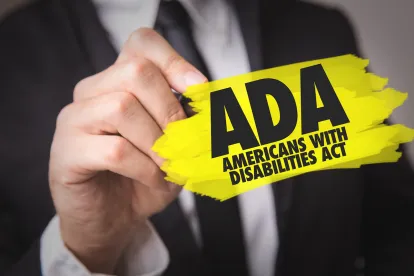As employers continue to navigate through the challenges of the COVID-19 pandemic, government agencies, such as the U.S. Equal Employment Opportunity Commission (EEOC) have been instrumental in issuing guidance that allows employers to create and comply with leave of absence policies that are compliant with the Americans with Disabilities Act (ADA) and the Family Medical Leave Act (FMLA).
With the number of vaccinated employees increasing, the gradual shift will be from employees requesting leave due to a COVID-19 diagnosis to many employees now requesting leave as a result of severe COVID-19 symptoms that last for months—this unique group of individuals are often referred to as “COVID-19 long-haulers.” For COVID-19 long-haulers, the EEOC has promised—but has yet to—issue guidance that employers can rely on in addressing these employees’ leave requests. In the meantime, what are some of the best practices an employer should follow in considering leave requests for COVID-19 long-haulers that are compliant with the ADA and the FMLA?
On July 26, 2021, President Biden announced his administration’s intent to apply ADA protection to individuals suffering from “long haul” COVID. The Biden Administration also published joint guidance from the Departments of Justice and Human Services (the Joint Guidance) that specifically states that “long haul” COVID can be an “actual disability” under the ADA and provides examples involving: (1) lung impairment resulting in a substantial limitation of respiratory function; (2) lingering intestinal pain, vomiting, and nausea; and (3) “brain fog” that substantially limits brain function, concentration and/or thinking.
Importantly, the Joint Guidance also recognizes that “long haul” COVID is “not always a disability,” referring to the fact that to qualify as a disability under the ADA, the physical or mental impairment must “substantially limit one or more major life activities” of the individual, which has typically been interpreted to exclude temporary conditions that an individual will fully recover from. To further complicate matters, however, the Joint Guidance also specifically states that “employment is outside the scope of this guidance document,” therefore leaving employers in a state of uncertainty until the EEOC weighs in on whether “long haul” COVID constitutes a disability under the ADA, and how or what steps an employer should take to be ADA compliant.
Given the current state of play, it is best to assume that the EEOC will take the same position as the Joint Guidance on whether long COVID is a disability under the ADA. It is also best to assume based on the Joint Guidance that the most likely requests will be remote work and a flexible schedule, as employers have seen throughout the pandemic. Based on these assumptions, best practices to comply with the ADA would include the following:
-
Review existing ADA requests for accommodation policies and procedures to ensure compliance with the Joint Guidance, being mindful that the interactive process is specifically mentioned in the Joint Guidance as necessary because not every case of “long haul” COVID necessarily meets the ADA definition of a “disability.”
-
Develop required medical forms to address “long haul” COVID symptoms and limitations that all employees’ doctors can complete as part of interactive process.
-
Engage in the interactive process to determine a reasonable accommodation. Keep in mind that the EEOC has made it clear that some accommodations that were reasonable at the height of the pandemic may not necessarily be reasonable on an ongoing and more permanent basis.
-
If inclined to deny remote work as an accommodation with respect to an employee with “long haul” COVID (as an employer would have done to contain the spread of COVID before the vaccine), gather the information necessary to be able to demonstrate the impact of the accommodation on productivity and performance.
-
Finally, remember the FMLA if your organization and the employee meets the requirements for coverage/eligibility. Consider that an employee who is FMLA-eligible could take up to 12 weeks of unpaid leave in a 12-month period. If a chronic condition, intermittent FMLA leave may be available.
Conclusion
Employers should keep an eye out for new EEOC guidance on “long haul” COVID and the ADA. In the meantime, however, the best advice is to assume the Joint Guidance will be adopted by the EEOC and follow the best practices included herein. Consult with your Foley employment law attorney on interactive process and reasonable accommodation issues as it relates to employees with long COVID, as case law is expected to also develop in the coming months.




 />i
/>i

